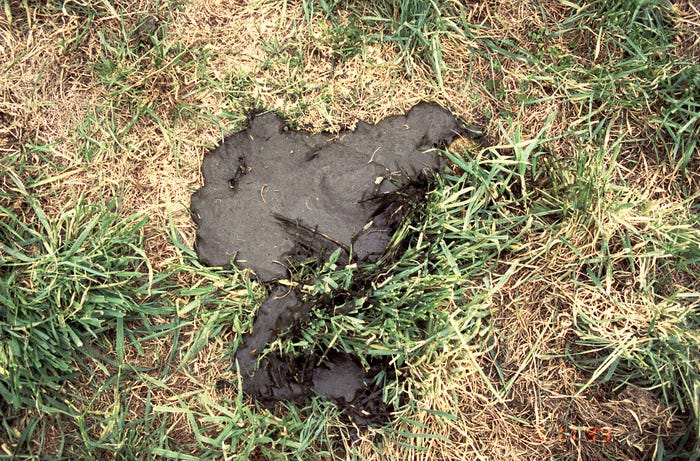
Learn to read the diet quality by various manure conditions and you can better manage grazing and supplementation.
This collection of dung pictures from the Samuel Roberts Noble Foundation at Ardmore, Oklahoma, were created for that purpose.
One of the most common examples is wintertime grazing of warm-season forages and the commonly low levels of dietary protein too low for adequate digestion. The manure pile labeled 6-8% protein is in that category and probably needs some supplemental protein to keep the diet above 8% crude protein, which for dry cows is the base level needed to maintain body condition.
The solution would seem to be watch the dung piles and begin supplementing when they are stacking up too much.
Of course, protein is not the only factor in forage quality, since energy is the thing that allows animals to maintain or gain body condition and to lactate, for example.
On wheat pasture or early spring grass, it's common to see very runny manure like that in the pictures labeled 16-19% and 20-28% protein. For a time the rumen microflora can cleave the amine groups off the protein chains and use the rest of the chain as a carbohydrate. Eventually, though, their systems get very high in nitrogen-based molecules (NH3 ammonia) and they stop gaining or sometimes have trouble with reproduction.
Again, reading manure condition can give you early warning to change management, perhaps supplying hay to supplement the high-protein forage, or limit-grazing the green forage in combination with hay and/or dry forage.
Ideally, you can look to see whether your stock is getting the necessary level of protein for the production class they are in, then match your management to their needs.
About the Author(s)
You May Also Like




